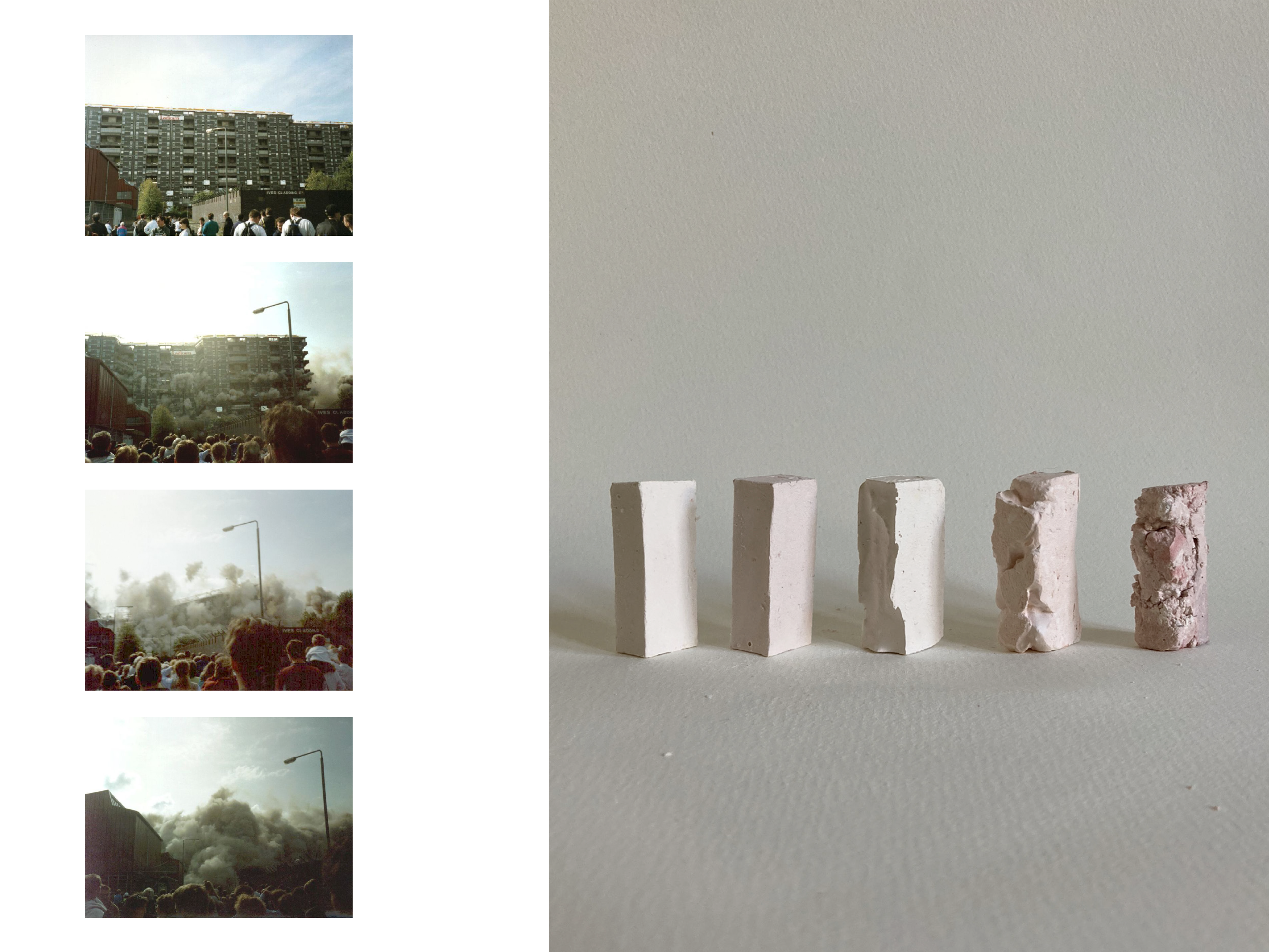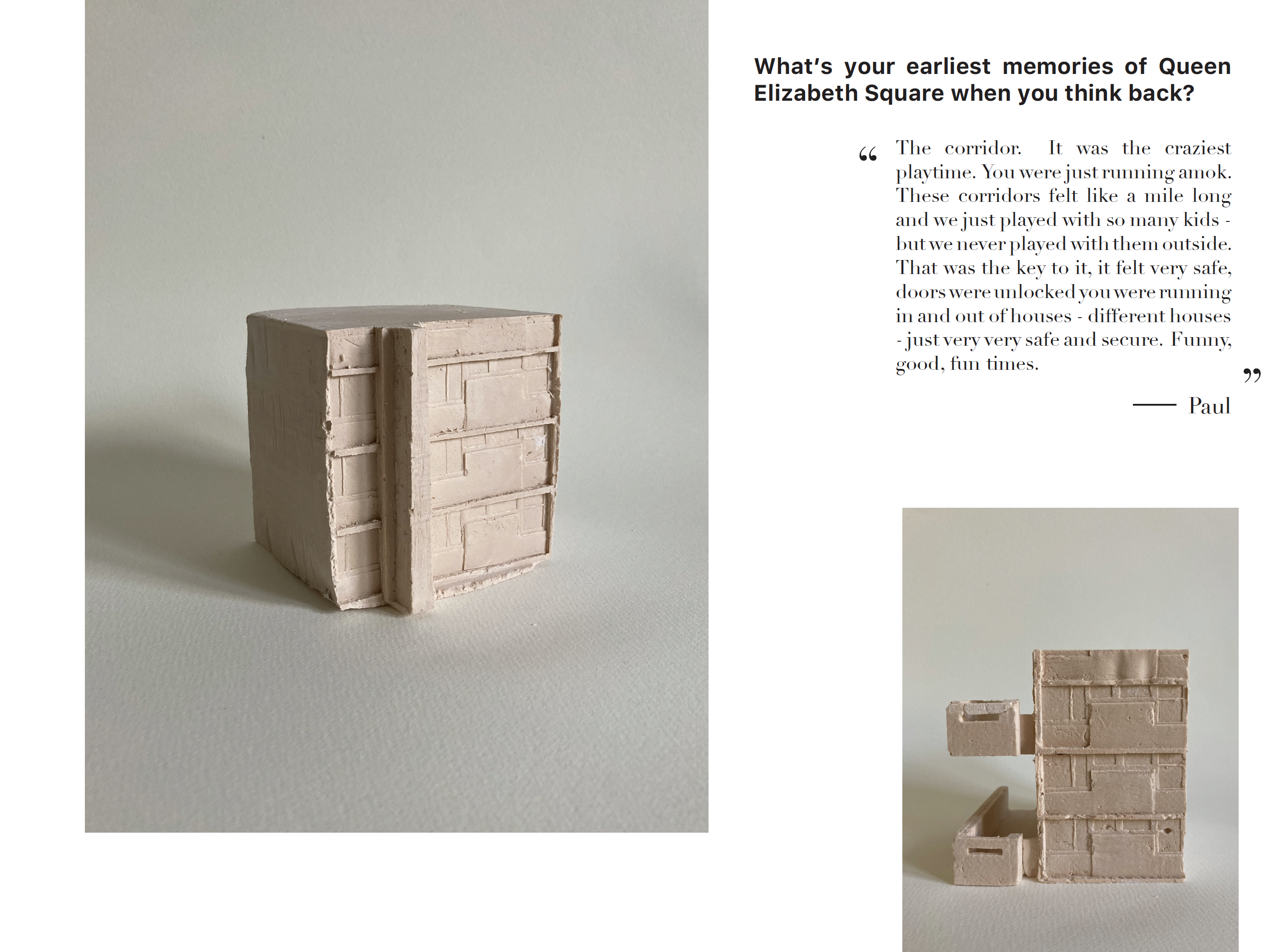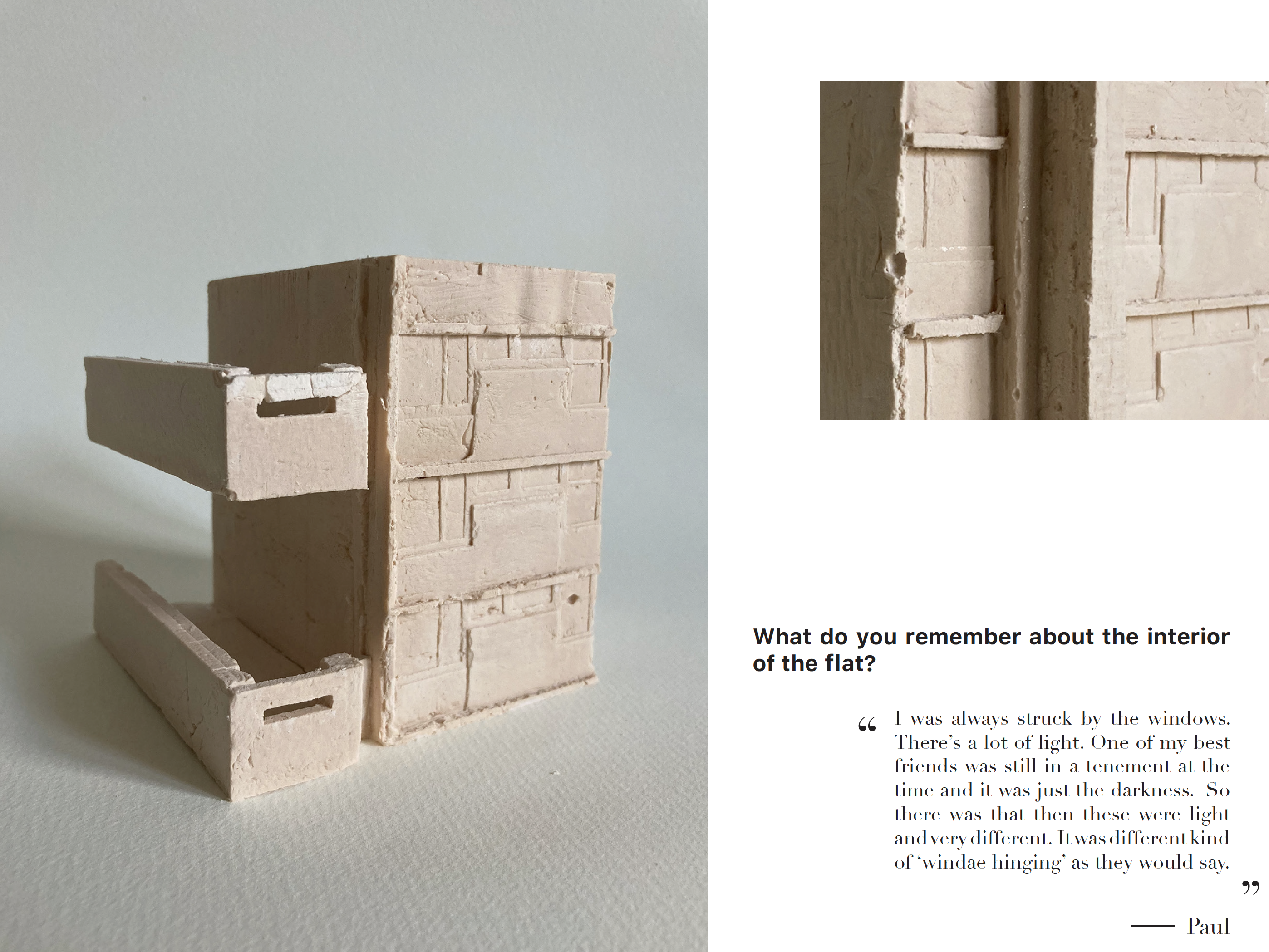The few isolated towers left standing are the remnants of Glasgow City Council’s mass housing regeneration scheme of the 1960’s. The failed attempt to seek salvation in brutalist, ‘Corbusian-esque’ high-rise flats has been extensively critiqued, while the experimental biproducts were neglected, condemned and eventually demolished.
One of the more notorious of the brutalist blocks, directly inspired by le Corbusier’s Unité d’Habitation in Marseilles, was Basil Spence’s Hutchesontown ‘C’ blocks. It too comprised of maisonette flats, with balconies and also famously took longer to build and cost more than expected. Internally the blocks were a complex maze of rooms, corridors and scattered staircases, but their attention to detail lay with the connection to the outside. The “communal balconies or ‘garden slabs’… were a perpetuation of the green, a space for some tubs of flowers, and to hang out the washing, to give the baby an airing, and to provide a garden fence to gossip over”.
In casting small fragments of the towers and their relationship to the outside, we cast their physical forms into space and into our memories once again. In a recent ‘Multistorey Memories’ project, former residents recount their times spent in Queen Elizabeth Square. Rather than further condemn these blocks, the nostalgic tapes are filled with fond memories and tales of hope.
Miles Glendinning (ed.) Rebuilding Scotland: The Postwar Vision 1945-1975 (Edinburgh: Tuckwell Press, 1992)
Key Themes: Lost Places, Community, Demolition, Memories



